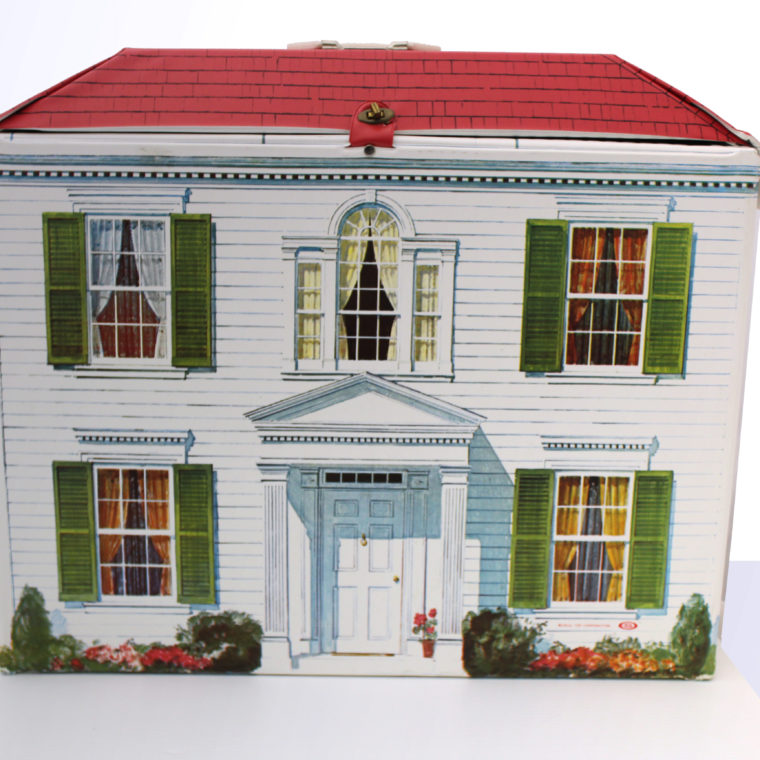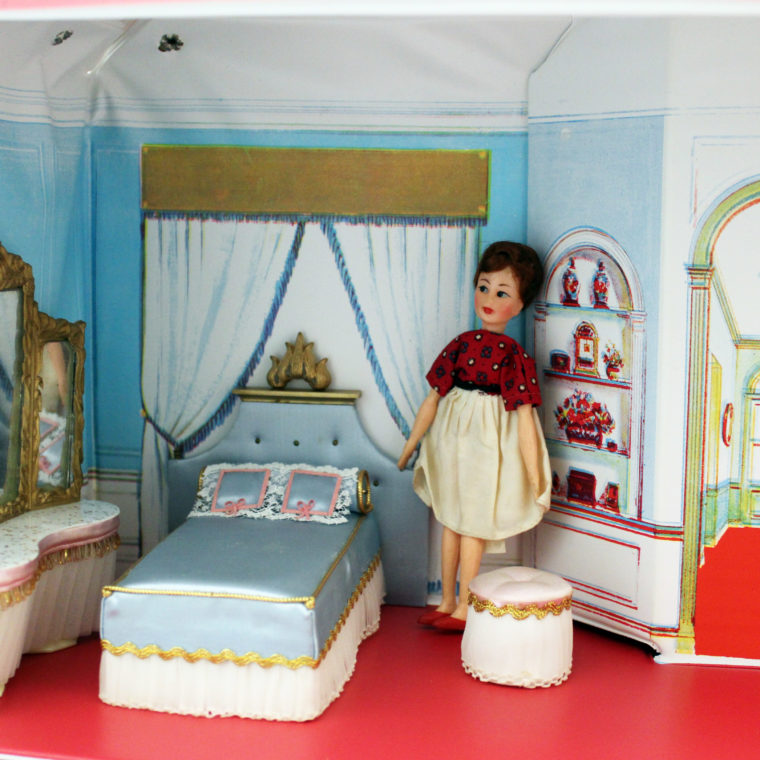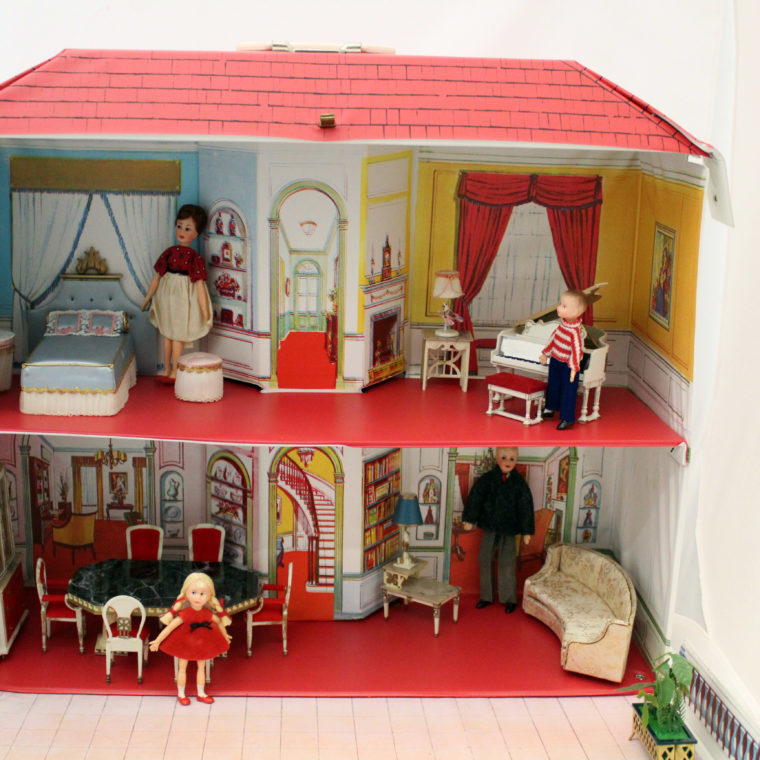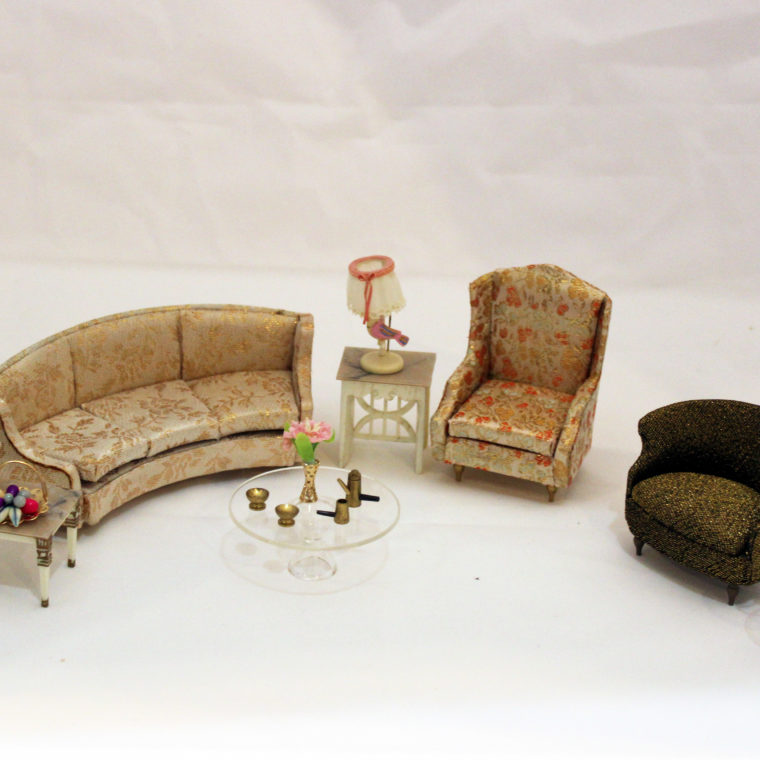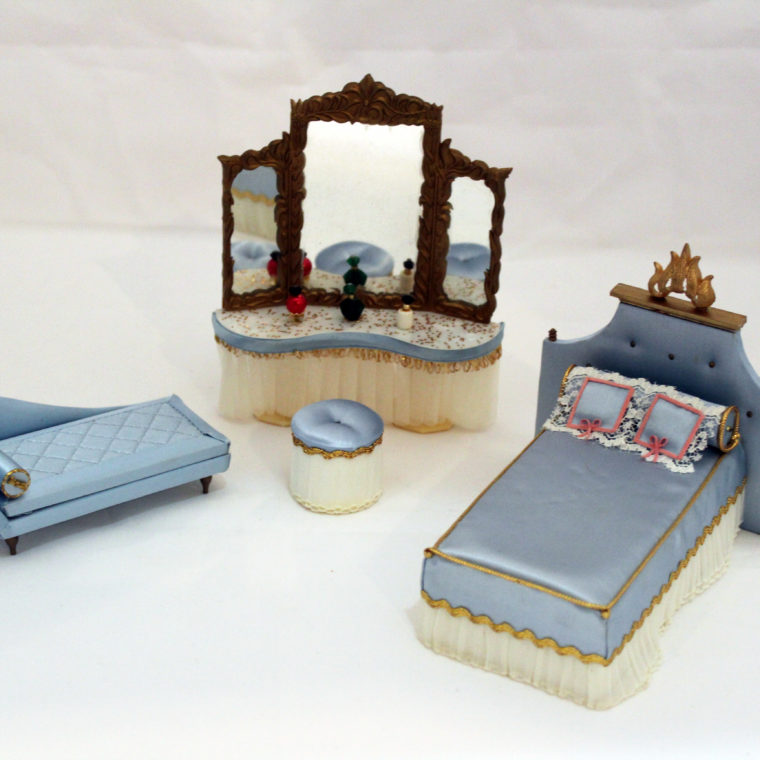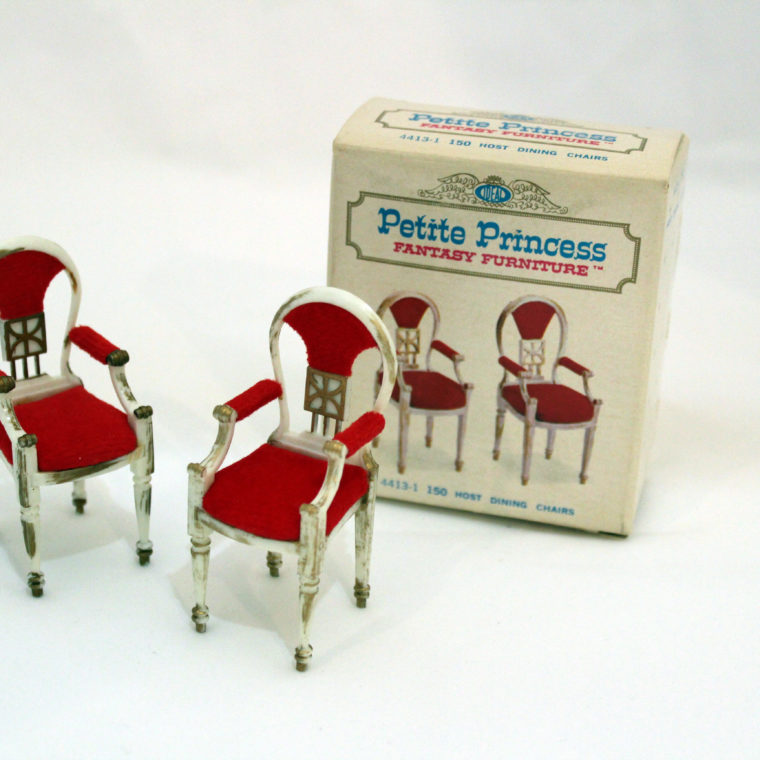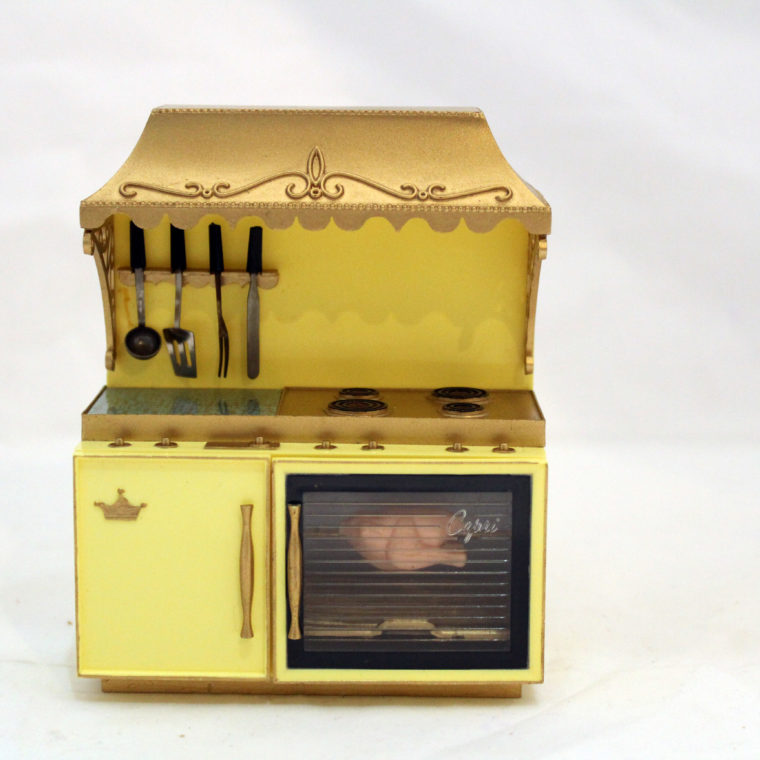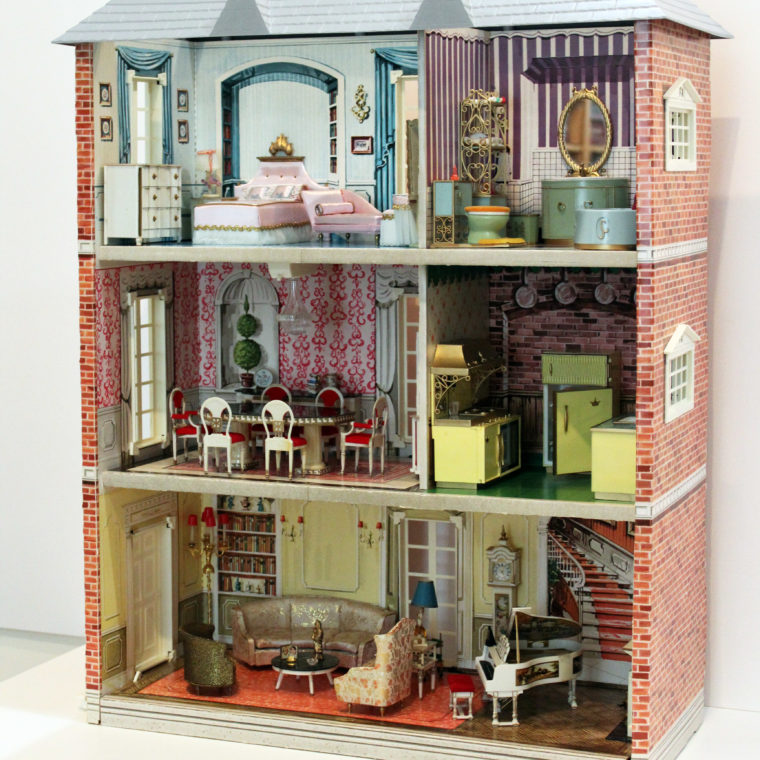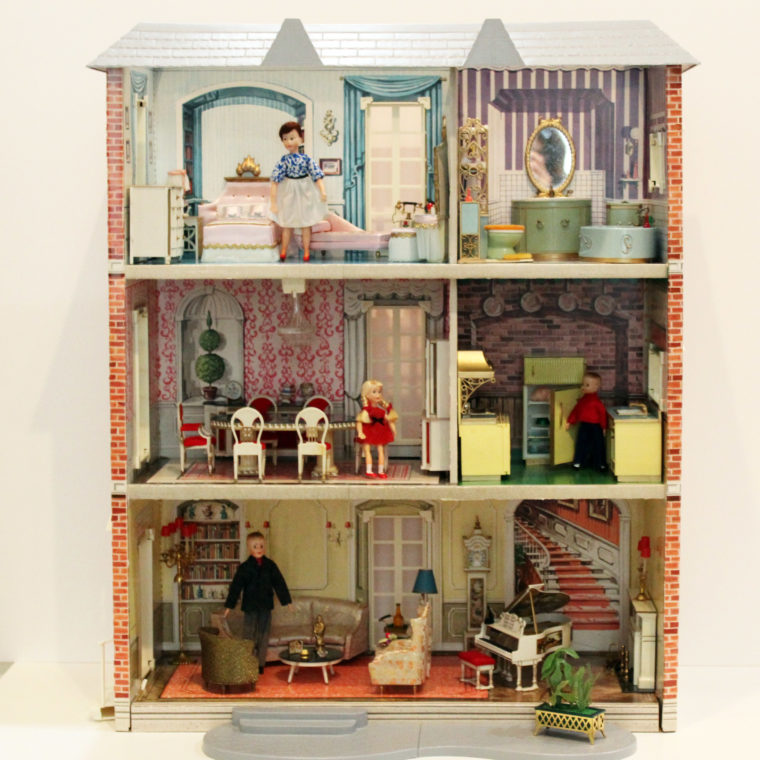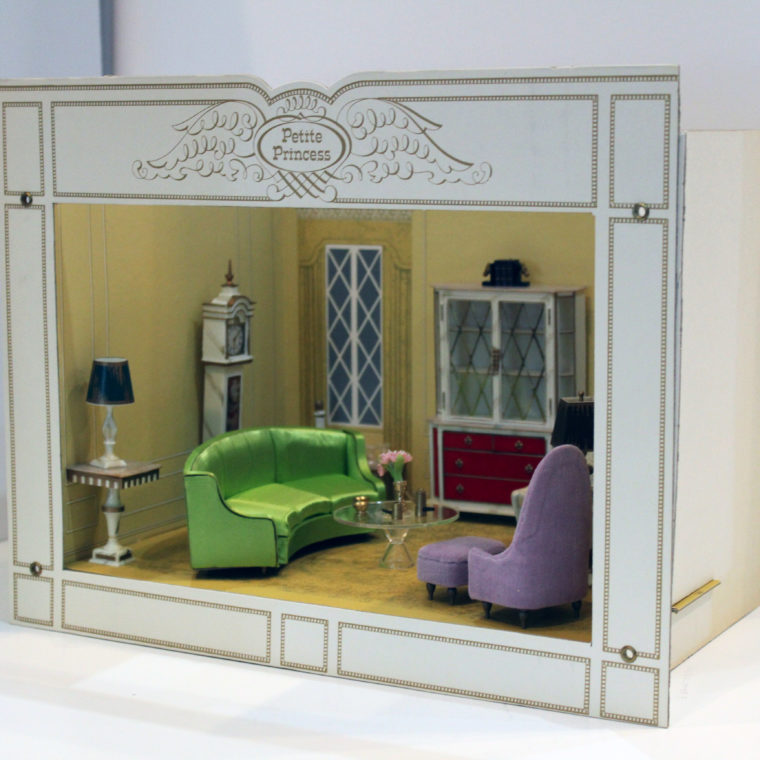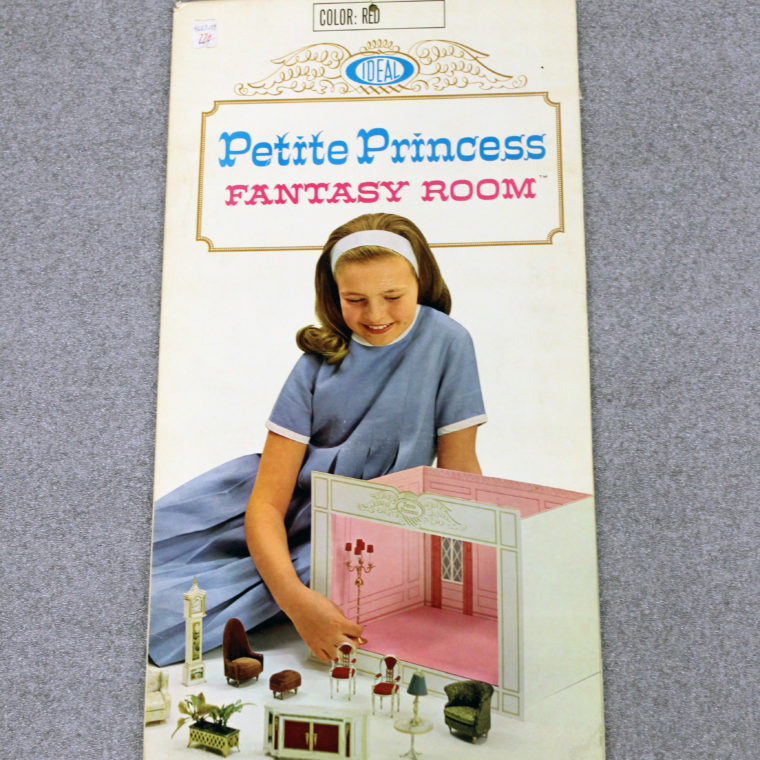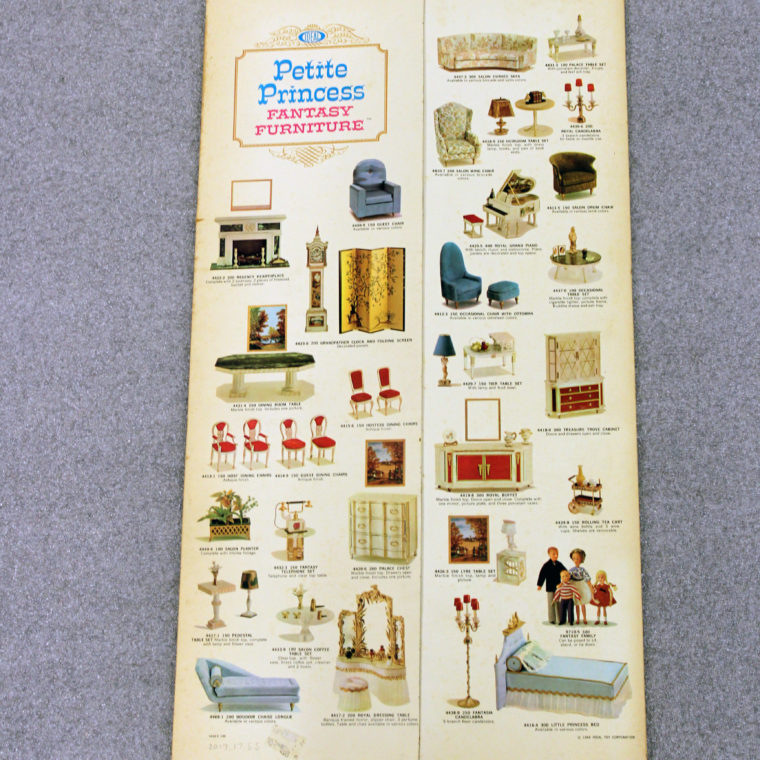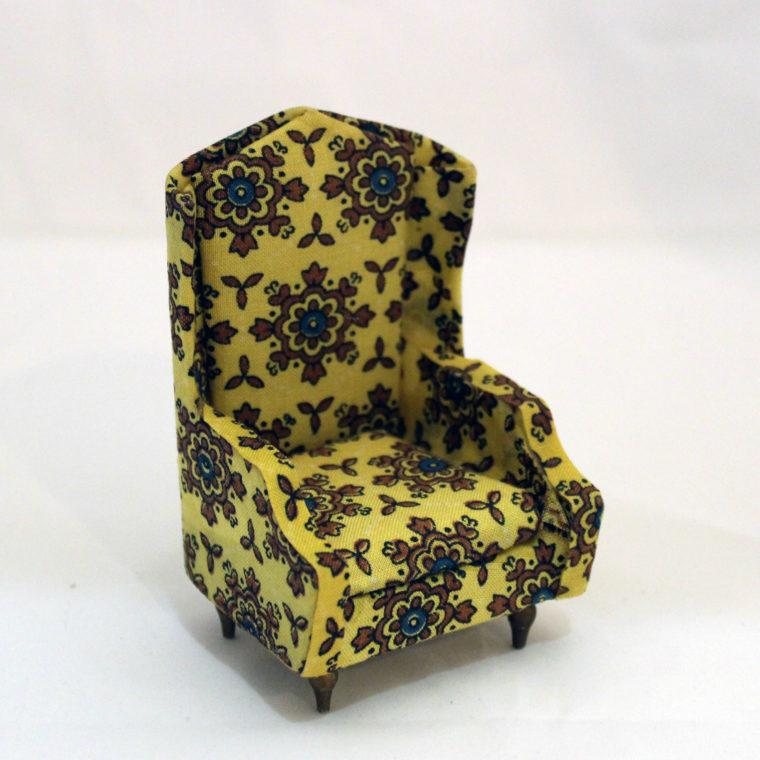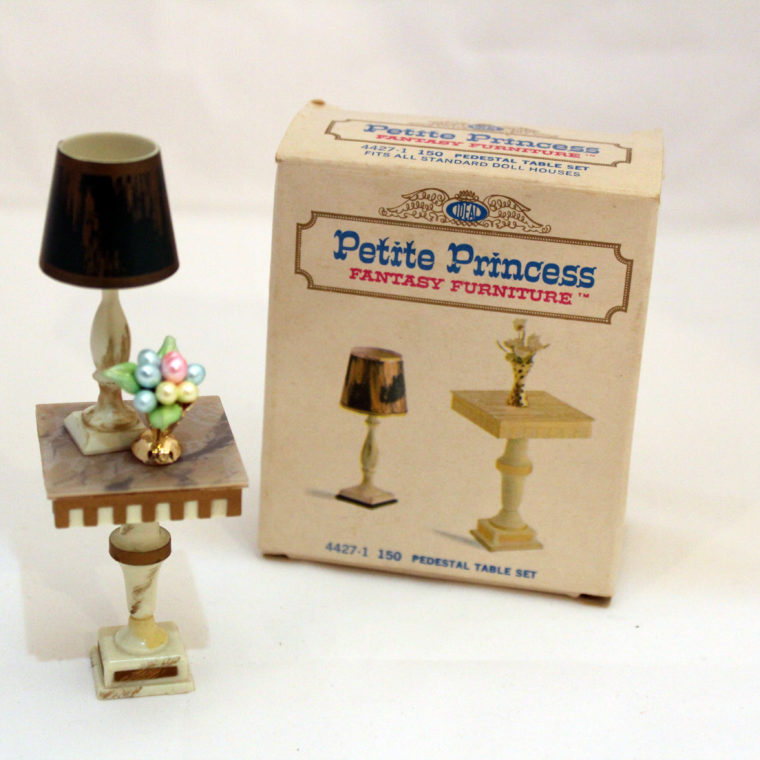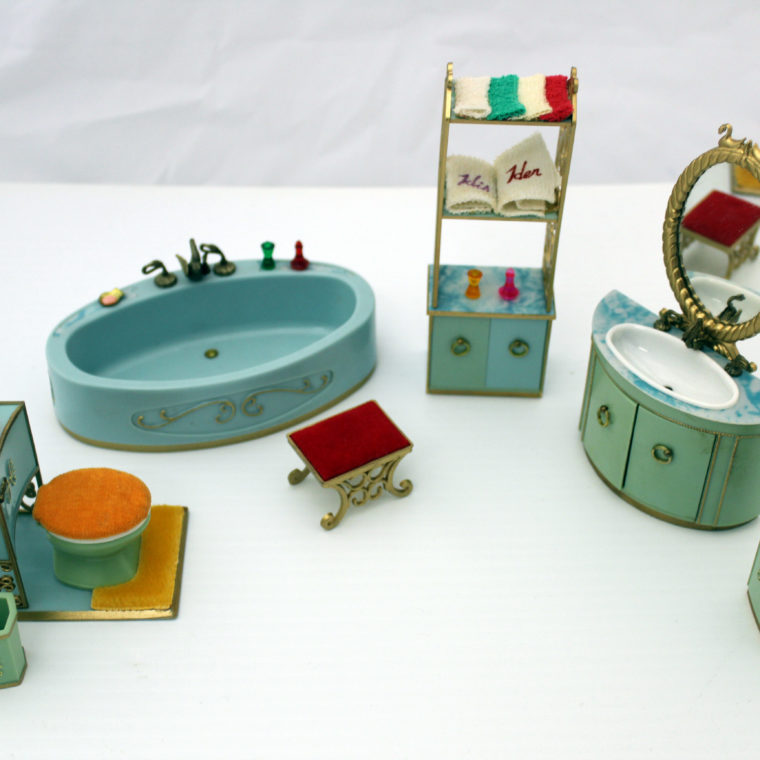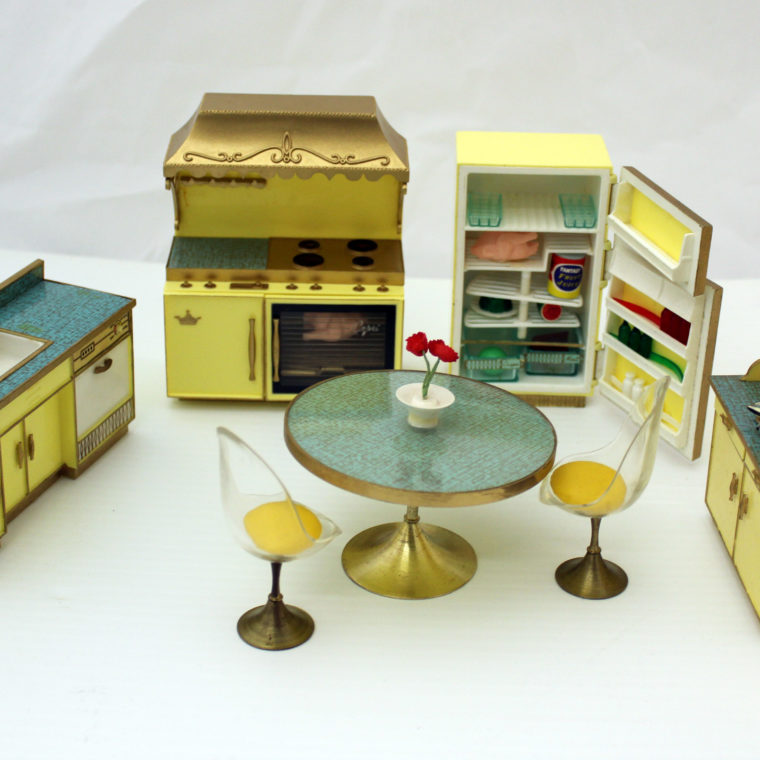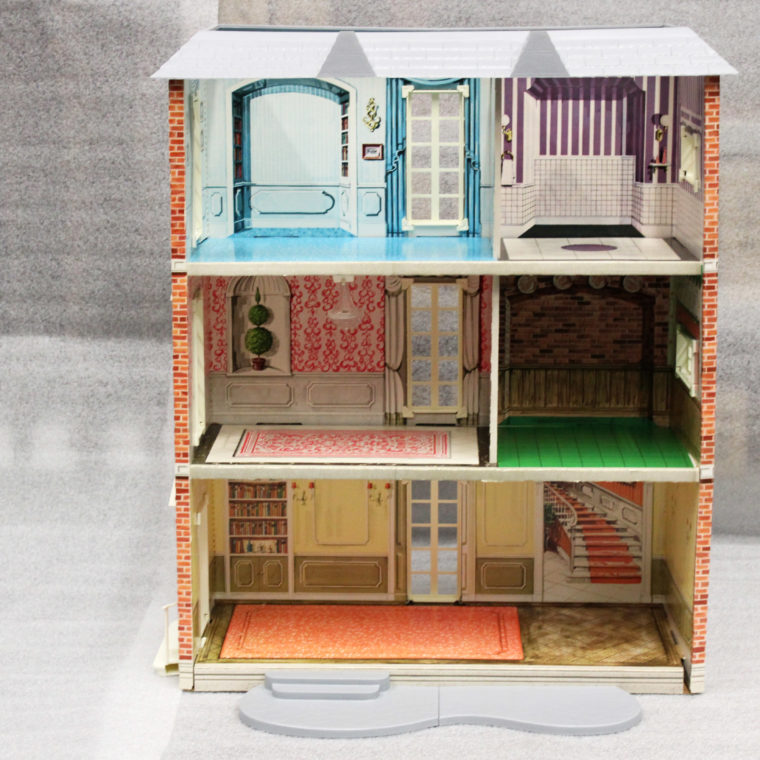1964-1967
Donated by Linda Gant
Browse the collection here
“Everything you can dream of. Perfectly made, so you can play with it, collect it, and be the perfect Petite Princess.”
Ideal Toy Company advertisement, 1960

In the early 1960s, the Ideal Toy and Novelty Corporation used state of the art plastic molding processes to create hyper-realistic furniture for dollhouses marketed specifically to young girls. The company’s Petite Princess Fantasy Furniture line debuted in 1964, offering a mix of Italian Renaissance, French Provincial, Rococo, Art Noveau, Victorian, and other styles. The 30-piece set included hand-painted furniture composed of wood, porcelain, brass, and glass, as well as hand-tailored satin and brocade upholstery. The designers sought to achieve an “antique look” that reflected 1960s interior design.
The Petite Princess Fantasy Furniture line and dolls were created to fit into existing dollhouses. Although Ideal did not initially create an accompanying dollhouse, the company did produce inexpensive pop up, stand-alone Fantasy Rooms. Offered in three color schemes – yellow, blue, and pink – the rooms folded up for easy storage. The furniture was designed to fit in any combination in any of the rooms. “Infinite changes are possible,” explained Ideal advertisements, “challenging the versatility of the tiny decorator to hour upon hour of imaginative play.”
Ideal embarked on a widespread advertising campaign for the collection, creating castle-like store displays and pushed the line extensively within trade publications. Despite all their efforts, the expensive Petite Princess furniture line did not live up to expectations and failed to sell.
In 1965, Ideal rebranded the toy line as Princess Patti and began selling an accompanying cardboard dollhouse for the furniture. The dollhouse, which featured plastic windows and other decorative elements, included the original Petite Princess furniture in four of the rooms, including a bedroom, living room, music room, and dining room. Ideal also added new bathroom and a kitchen sets to complete the house, plus more modern future to appeal to a broader audience.
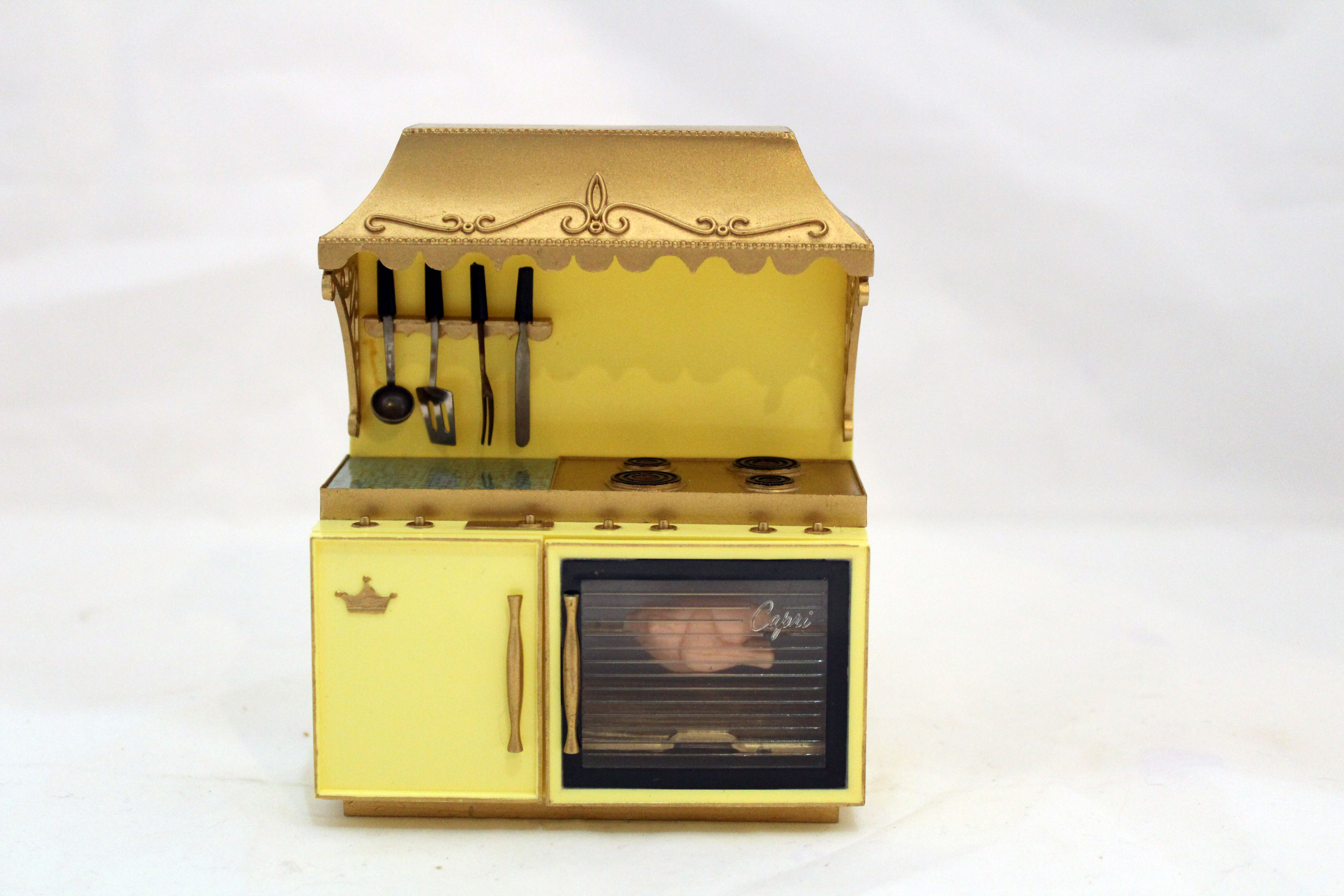 Originally each piece of furniture was sold separately but, with the Princess Patti line, Ideal sold entire room sets together in hopes of wooing more sales since children could complete their fantasy collection faster. However, this rebranded and expanded line was also unsuccessful and production ended a year later. The remaining stock was sold as a set with newly-designed vinyl dollhouses until 1967. Despite never taking off in popularity with children, the heavily discounted line found a new life among adult dollhouse enthusiasts. It is estimated that 50% of the Petite Princess products sold were purchased by adult collectors.
Originally each piece of furniture was sold separately but, with the Princess Patti line, Ideal sold entire room sets together in hopes of wooing more sales since children could complete their fantasy collection faster. However, this rebranded and expanded line was also unsuccessful and production ended a year later. The remaining stock was sold as a set with newly-designed vinyl dollhouses until 1967. Despite never taking off in popularity with children, the heavily discounted line found a new life among adult dollhouse enthusiasts. It is estimated that 50% of the Petite Princess products sold were purchased by adult collectors.
In 2018, the National Building Museum was contacted by Linda Gant, a passionate Petite Princess collector and co-author of The Complete Reference Guide to Ideal’s 1964 and 1965 Petite Princess and Princess Patti Dollhouse Furniture. Gant, along with co-author Deb Holman, spent decades meticulously researching and documenting Petite Princess products and advertisements. Gant offered to donate her collection, almost the entire Petite Princess and Princess Patti lines, to the Museum. Furthermore, she connected us with Holman and Roy Specht, fellow Petite Princess collectors that could donate the few pieces Gant did not have in her collection.
The National Building Museum does not usually collect doll houses or doll furniture, but the proposition of the complete line and story of Petite Princess was an offer we could not refuse. Today our collection consists of over 200 pieces of furniture, dolls, Fantasy Rooms, doll houses, advertisements and store displays. The Petite Princess collection reflects, in fine detail, a fantasy of opulence and an aspirational model for American middle-class children in the 1960s. It speaks to a specific time and place in our nation’s history and how toy companies marketed the American dream to a new generation of children.

